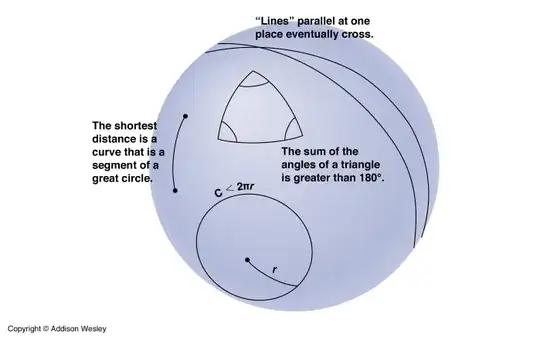While reading Thorne's 'The Science of Interstellar', I came across this piece of information:
'Now, the Sun’s equatorial plane divides space into two identical halves, that above the plane and that below. Nonetheless, Figure 4.4 shows the equatorial plane as warped like the surface of a bowl. It bends downward inside and near the Sun, so that diameters of circles around the Sun, when multiplied by π (3.14159 . . . ), are larger than circumferences—larger, in the case of the Sun, by roughly 100 kilometers.'
Has anyone that has read this book got an explanation for me, I do not get the d*pi compared to circumference part, why does it differ?
